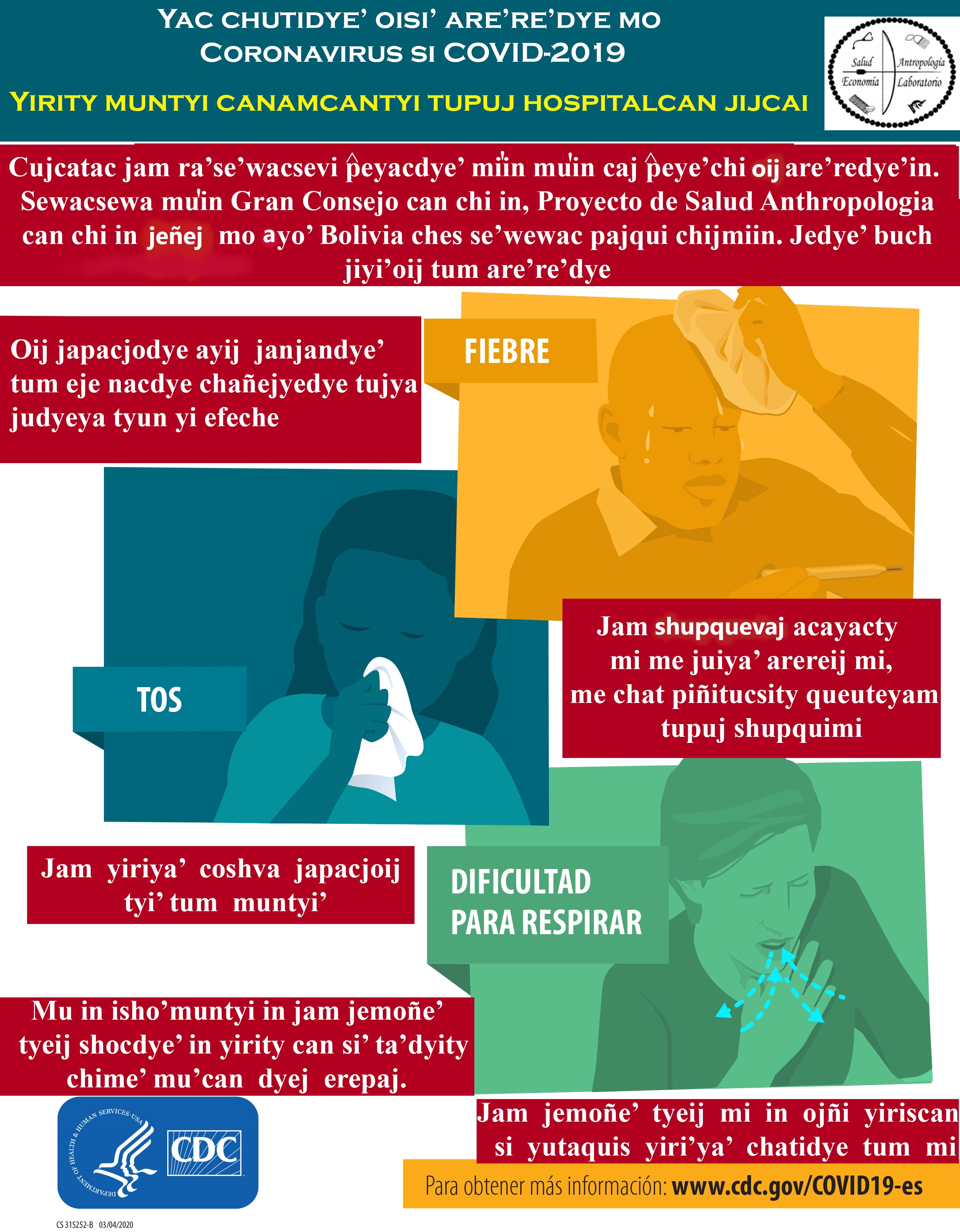ASU anthropologist helps indigenous community respond to COVID-19

Tsimane Health and Life History Project Team holding a community meeting to explain the COVID-19 pandemic and discuss ways to mitigate the spread of COVID-19 in the Tsimane communities. Photo courtesy of the Tsimane Health and Life History Project Team.
An Arizona State University anthropologist and his colleagues are helping an indigenous group in Bolivia understand and respond to the COVID-19 pandemic. He believes the public health plan they created can help guide other native communities through the crisis.
Benjamin Trumble, an assistant professor at ASU’s School of Human Evolution and Social Change, is part of an international and interdisciplinary team that developed a comprehensive response plan published this month in The Lancet medical journal.
The article outlines steps for informing an indigenous community in Bolivia, the Tsimane (pronounced Chi-mahn-eh), about COVID-19 and helping them limit damage caused by the coronavirus. Trumble co-directs the Tsimane Health and Life History Project Team, which has worked with the Tsimane for nearly 20 years.
The team used Centers for Disease Control and Prevention guidelines and materials to develop Tsimane-specific protocols for responding to COVID-19. They presented the plan to the Tsimane in their native language during a series of community gatherings before the virus reached this remote area of Bolivia.
The plan’s main focus is on communication and taking precautionary steps to limit spread of the coronavirus. The first portion of the plan focused on the coordination of tribal leaders, collective decision-making, education and awareness, training in the use of personal protective equipment and stocking medical supplies.
This took place in March, as the pandemic spread through Bolivia. Now, as COVID-19 has been reported in the region close to Tsimane communities, the second phase of the plan emphasizes testing, case reporting, contact tracing and isolation.
The team saw an urgent need to establish a plan for indigenous communities in the area, writing, “Despite the fact that almost half of Bolivians are considered to be of indigenous origin, no specific guidelines have been outlined for remote indigenous groups inhabiting native communal territories.”
Trumble was unsure how the Tsimane government would react to hearing about COVID-19 and the public health plan, though they’ve experienced outbreaks before and understood the severity of this one. Trumble was surprised by how quickly they adopted and implemented the plan. The Tsimane installed gates across common entry points to prevent people from entering their communities, and stocked up on everyday supplies, like soap and salt, to minimize trips to town.
Trumble recently learned of a Tsimane mother and child who were turned away when trying to reenter their community after spending time in a larger Bolivian city. Instead of returning home, the mother and child were sent to quarantine for two weeks at the Tsimane’s established shelter in the nearby market town San Borja.
“That’s evidence that our plan is working,” Trumble said. “They listened to the protocol and followed it to the letter.”
Self-isolation is another crucial step outlined by the research team. Trumble said within a Tsimane community, self-isolation is possible because they grow and hunt their own food. The simple design of their homes also allows new structures for isolation to be built quickly.
While remote settings and simple structures exist in many indigenous cultures around the world, there are still low-resource settings where the protocol is less applicable. Some elements of the public health plan can be used by Native American communities, but self-isolation may be less practical because they need to visit the supermarket.
“It’s not a ‘one-size-fits-all’ plan, but it can be modified,” Trumble said. “Policymakers, community members and leaders could see it and modify the policy to fit their indigenous populations worldwide.”

Modified CDC poster in the local Tsimane Language. Photo courtesy of the Tsimane Health and Life History Project Team.
The team made its plan and CDC-adapted resources available in multiple languages, including Spanish, French and Portuguese, in hopes that others will be able to utilize them. “It’s really wonderful to see all these researchers who have never met each other come together online and share resources,” Trumble said.
The researchers continue to monitor the effectiveness of the plan in place. The current team working in Bolivia consists of approximately 10 Tsimane, three doctors, a biochemist and two logistics personnel.
The next steps include stocking five existing medical outposts with medicine for common ailments and developing a field test for COVID-19. Trumble is drawing from his experience as a researcher at ASU’s Center for Evolution and Medicine to help create a test that can be used in a low-infrastructure setting.
“All methods are field-friendly if you want to know the answer badly enough,” Trumble said. “And we really want to know the answer.”
There are approximately 16,000 Tsimane living in clusters of 50-500 people in the lowlands of Bolivia. The Tsimane Health and Life History Project Team has been working with the community for almost two decades and has received funding from the National Institutes of Health to study cardiovascular health and Alzheimer’s disease and other dementias.
The team has collaborators from Bolivia, France and the United States. The other co-directors are anthropologists Hillard Kaplan from Chapman University, Michael Gurven from University of California, Santa Barbara and Jon Stieglitz from the Institute for Advanced Study in Toulouse.
More Health and medicine
Is ‘U-shaped happiness’ universal?
A theory that’s been around for more than a decade describes a person’s subjective well-being — or “happiness” — as having a U-…
College of Health Solutions medical nutrition student aims to give back to her Navajo community
As Miss Navajo Nation, Amy N. Begaye worked to improve lives in her community by raising awareness about STEM education and…

Linguistics work could improve doctor-patient communications in Philippines, beyond
When Peter Torres traveled to Mapúa University in the Philippines over the summer, he was shocked to see a billboard promoting…